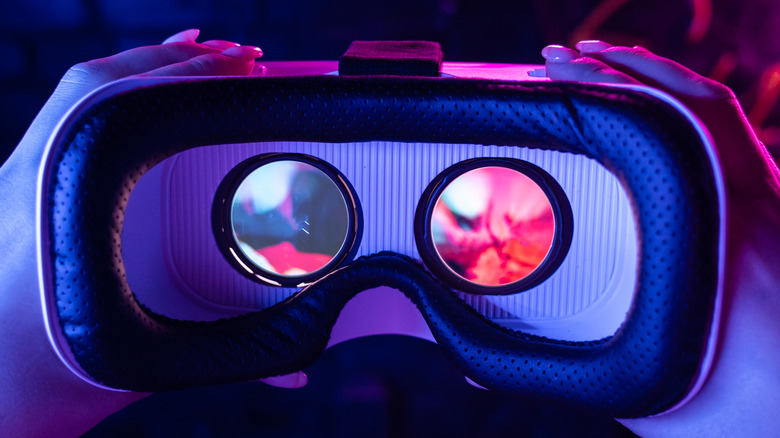Apple AR/VR Headset Leak Details Surprising Display Specs
Though official confirmation is still pending, it's no secret that Apple — for the past several years — has been developing its own mixed-reality headset. However, the company's original plan to release the product in 2020 was reportedly hampered by the onset of the COVID-19 pandemic. Three years on, Apple continues to maintain stoic silence about its plans for an AR/VR headset. The same cannot, however, be said about several Apple analysts who continue to claim that the company will, indeed, formally announce the product before the end of 2023. Several analysts have also indicated that the company may officially unveil this much-rumored virtual reality/augmented reality headset at WWDC 2023, which is less than a week away. The company all but confirmed that with an AR-themed Easter egg on one of its Events pages.
Until recently, we had a very rudimentary idea of the hardware prowess of Apple's rumored MR headset. Most reports talked about the possibility of the headset using Apple's M2 chips and featuring "high-resolution displays". More recent rumors hinted that the device may use twin 4K micro OLED displays to offer a cumulative 8K resolution. However, just a week before the possible announcement, noted display analyst Ross Young from Display Supply Chain Consultants (DSCC) has made several startling claims about the display tech that could be packed in the product. If these specs end up being true, the rumored $3,000 plus price tag for the device might actually sound reasonable.
A 5,000-nit screen for the Apple AR/VR headset
According to Ross Young, the twin displays of Apple's AR/VR headset measure 1.41 inches each. These displays will have a combined resolution of 8K, he claims, thereby boosting the PPI value to over 4,000 pixels per inch. With a claimed brightness of 5,000 nits, it would be far brighter than any competing product currently on the market. To put that number into perspective, it would make these tiny displays as bright as the displays used on ultra-high-end TVs. When looking at the best smartphone displays currently available, the brightest ones out there barely reach 2,000 nits peak brightness. While the claim of 5,000 nits only refers to the peak brightness value, there is no denying that it is an exceptionally high number for a VR headset.
Apple's AR/VR imager specs:
Two 1.41" Micro OLEDs
4000 PPI
>5000 nits of brightness— Ross Young (@DSCCRoss) May 30, 2023
These exceptional display specs — if true — will also ensure that the viewing experience on Apple's VR/AR headset will be superior to any competing product. The only other AR headset that comes close to this number is the Magic Leap 2, which peaks at 2,000 nits. With the rumored 8K resolution, it will also leap ahead of the Quest 2 Pro from Meta, which only manages to reach a PPI value of 1,200. With WWDC less than a week away, we don't need to wait too long to see if Apple finally ends up announcing the Apple headset. Other announcements expected at WWDC 2023 include new iterations of iOS, iPadOS, macOS, and tvOS. This is in addition to a rumored 15-inch version of the MacBook Air, as well as a new Mac Pro.

